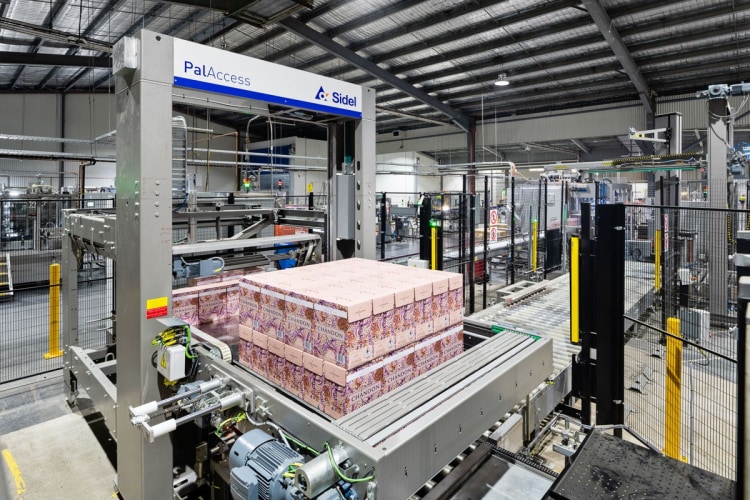The Cermex WB46 Wrap-Around case packer is perfectly suited for the packing operation involving premium product handling. The machine provides extremely smooth bottle handling, regardless of the bottle’s design or applied label type. All the contact points between the machine’s parts and the products are designed to maintain the products integrity and to avoid the risks of product marking - no matter whether it is handling Special Editions decorated with sleeves, or regular Domaine Chandon bottles, which come with paper labels. The carefully designed picking head grabs and transfers six bottles at a time onto the automated partition inserter module that is built into the case packer unit. “We spent time verifying the proposed technical concepts to make sure that the bottles would be handled with extra care, minimising the risks of damaging any part of the container, including hoods, labels and sleeves,” adds Julien. Afterwards the product collation is transferred into the Wrap-Around blanks that are then fully enclosed around the bottles to provide a strong and perfectly squared case. The latter is fundamental to ensure proper palletisation and successful downstream logistic operations.
Chris Fraser, Production Supervisor at Domaine Chandon comments, “Our cartons have an extremely squared shape and also stack very well on the pallet; this means that there is minimal impact on our quality once the product is transported.” Richard McCaughey, Operations Director, DCA, adds: “We already had a case packing solution onsite but this one still included a high level of manual handling: we inserted case partitions by hand, palletised by hand and forklifted between machines for stretch wrapping.”
Coming out of the Cermex WB46, the cases are labelled and conveyed into the Sidel PalAccess palletiser. This piece of equipment is another fully automated unit with tool-less changeovers, requiring neither a change of parts nor manual adjustments. Looking into the future, the HMI’s built-in PalDesigner software enables operators to design, simulate and load new pallet patterns without the need of additional programming or specific service intervention. The new operating panel’s interface also allows access to the machine’s technical documentation, One Point Lesson (OPL) sheets and specific videos to assist with trouble shooting operations.
Richard concludes, “Throughout the whole process, the Sidel teams were very proactive and helped us analyse some of the most difficult challenges of the project, in particular the automated partition insertion into the cases.”
Sidel expand local footprint in Australia and New Zealand
“One of the doubts we initially had during this project was working with a supplier who have their roots in Europe: we were afraid that the local support they might have provided to an Australian customer was less than what we usually get from local players. Looking back, it was very encouraging to see that Sidel are rather able to combine local proximity with a global footprint; this is key if they want to increase their operations in our region,” Richard highlights. “We are currently expanding in the Australian and New Zealand markets,” Julien adds. “For us, Chandon are a very strong partner here, especially since we want to grow further in this market, building on our longstanding legacy in the wine and spirits segment.”
The End-of-Line project has now been running successfully for more than one year and Domaine Chandon are seeing positive results all around: the sparkling winemaker have been able to achieve higher efficiency levels and reach their production targets in a growing business environment.




